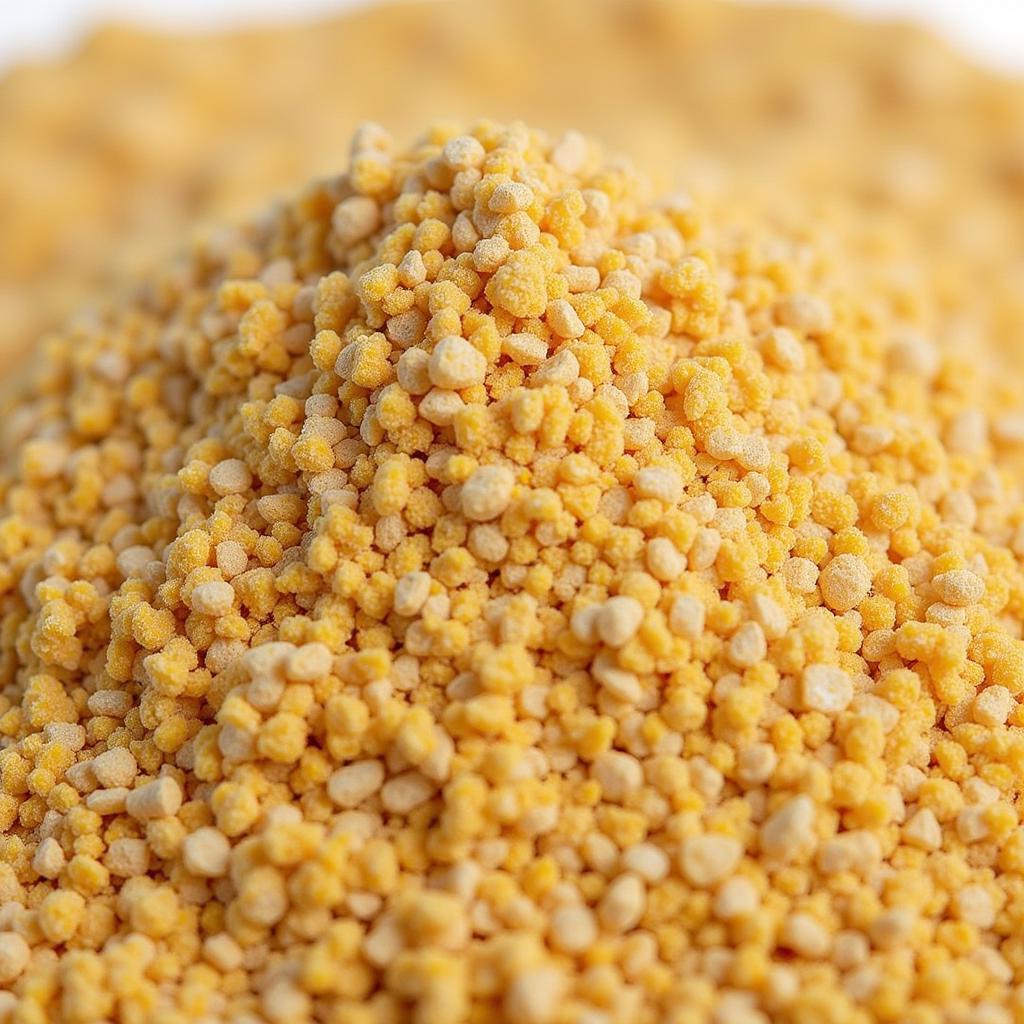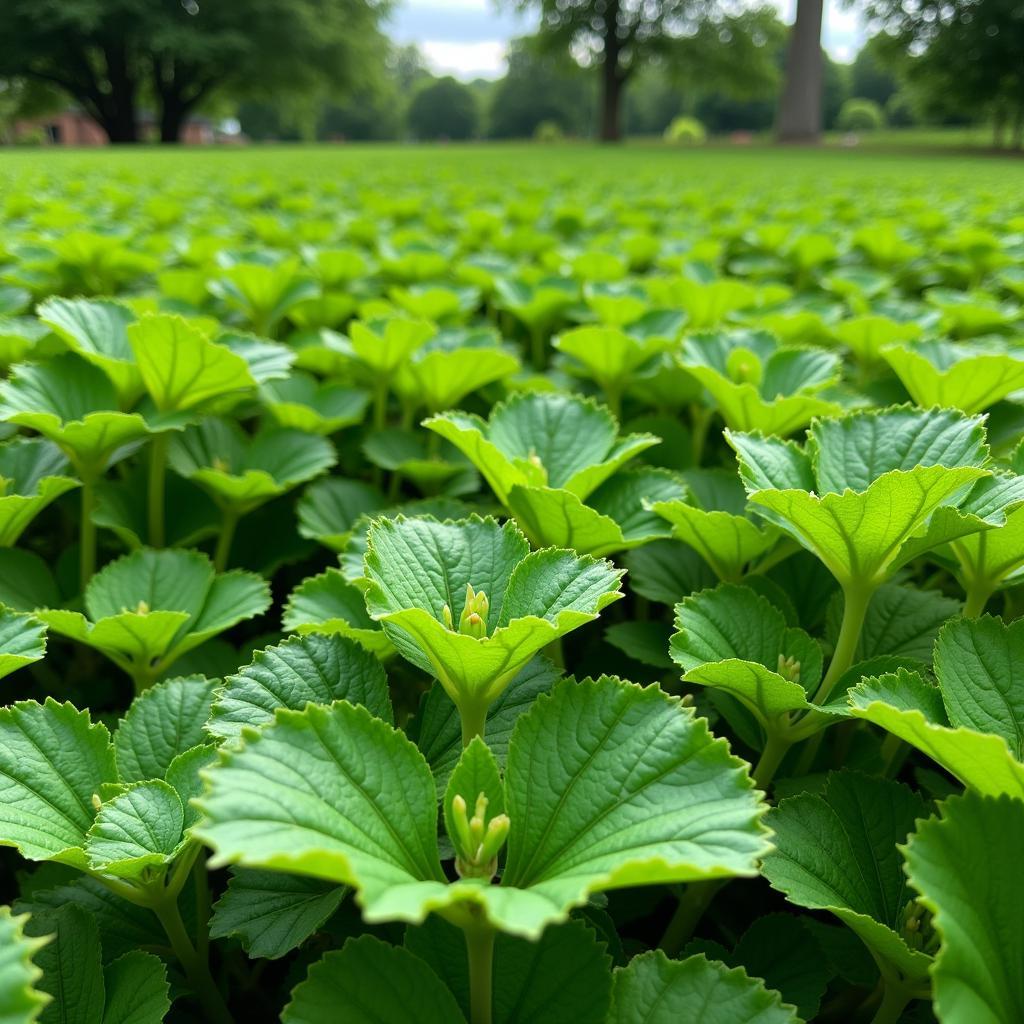Using 10-10-10 fertilizer for food plots is a common practice, but understanding its benefits and limitations is crucial for achieving optimal results. This balanced fertilizer provides essential nutrients for plant growth, but its application requires careful consideration of soil type, plant species, and environmental factors. Let’s explore the intricacies of using 10-10-10 fertilizer to create thriving food plots.
What is 10-10-10 Fertilizer and How Does it Work?
10-10-10 fertilizer is a granular fertilizer containing equal parts nitrogen (N), phosphorus (P), and potassium (K). These three macronutrients are vital for healthy plant development. Nitrogen promotes leafy growth, phosphorus supports root development and flowering, and potassium contributes to overall plant health and disease resistance. Applying this balanced fertilizer provides a boost to your food plot, especially in nutrient-deficient soils. A triticale food plot could particularly benefit from this balanced nutrient approach.
 Close-up of 10-10-10 fertilizer granules
Close-up of 10-10-10 fertilizer granules
Knowing your soil composition is key to effective fertilization. Soil testing helps determine existing nutrient levels, ensuring you’re not over- or under-fertilizing. Over-fertilizing can lead to environmental problems, while under-fertilizing limits plot potential.
When to Apply 10-10-10 Fertilizer
Timing is crucial when applying 10-10-10 fertilizer. For best results, apply it during the planting stage or early growth phase. This gives young plants the necessary nutrients to establish strong root systems and healthy foliage. For cool-season crops like food plot winter wheat, apply in early fall or spring. For warm-season crops, apply in the spring.
Tailoring Application to Specific Plants
Different plants have different nutrient requirements. While 10-10-10 is a good all-purpose fertilizer, some plants may benefit from a different NPK ratio. Consider the specific needs of your chosen plant species. Researching the best whitetail food plot often involves understanding the optimal fertilizer blend for the specific plant species.
Tips for Effective Application
- Even Distribution: Use a spreader for even distribution and avoid clumping.
- Watering: Water the area thoroughly after application to help the fertilizer dissolve and reach the roots.
- Monitor Growth: Observe plant growth and adjust fertilization as needed.
“Properly applied 10-10-10 fertilizer can be a game-changer for food plots,” says expert horticulturist, Dr. Emily Carter. “But always remember to conduct a soil test before applying any fertilizer to understand your soil’s needs.”
Considerations for Using 10-10-10
While 10-10-10 can be beneficial, it isn’t a one-size-fits-all solution. Some plants, like legumes, have nitrogen-fixing capabilities and may not require as much nitrogen. In such cases, a different NPK ratio might be more suitable. For larger food plots, utilizing appropriate food plot equipment for atv can significantly improve the efficiency and effectiveness of fertilizer application.
Environmental Impact
Be mindful of potential runoff into waterways. Excessive nitrogen and phosphorus can contribute to algal blooms and other environmental issues. Always follow recommended application rates and avoid fertilizing near water sources. Consider planting an alfalfa deer food plot as alfalfa is known for its nitrogen-fixing capabilities and can contribute to healthier soil over time.
 A lush and thriving food plot after fertilization
A lush and thriving food plot after fertilization
“Over-fertilizing can do more harm than good,” warns Dr. James Miller, an agricultural scientist. “Always apply fertilizer responsibly to protect our environment.”
In conclusion, 10-10-10 fertilizer can be a valuable tool for creating successful food plots. By understanding its properties, application methods, and potential impact, you can maximize its benefits while minimizing environmental risks. Remember to conduct a soil test, choose the right application time, and monitor your plot’s progress for optimal results with 10-10-10 fertilizer.
FAQ
- How often should I apply 10-10-10 fertilizer?
- Can I use 10-10-10 on all types of plants?
- What are the signs of over-fertilization?
- How do I store 10-10-10 fertilizer safely?
- What are some alternatives to 10-10-10 fertilizer?
- Is 10-10-10 organic?
- How much 10-10-10 should I use per square foot?
For further assistance, please contact us at Phone Number: 02437655121, Email: [email protected] or visit our address: 3PGH+8R9, ĐT70A, thôn Trung, Bắc Từ Liêm, Hà Nội, Việt Nam. We have a 24/7 customer service team.